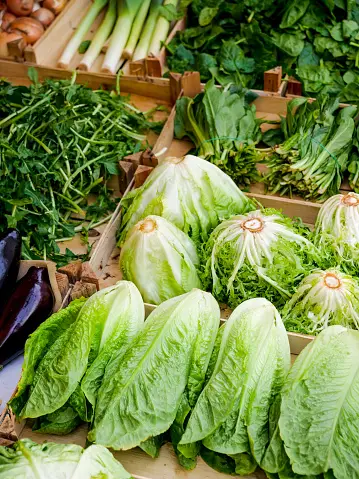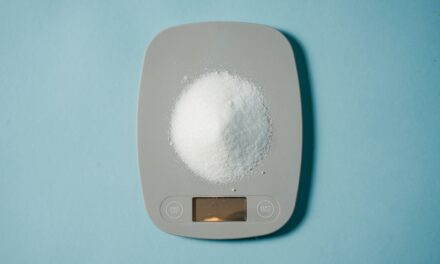Salad spinners have been used since 1973 when a French inventor named Gilberte Fouineteau patented the idea. Since then these gadgets have been used all over the world by a large variety of households.
A salad spinner is used to wash and remove excess water from lettuce or other salad greenery. This kitchen tool consists of:
- A bowl
- Acolander
- A lid containing the spinner mechanism
When the handle is turned it causes the colander to spin allowing the excess water to be removed.
While salad spinners seem like a simple kitchen tool, they contain many different parts to create the desired effect.
What Is a Salad Spinner?
Now that you know how a salad spinner works, you may be wondering what it even is.
A salad spinner is a great kitchen tool that spins wet lettuce to create a centrifugal force that removes excess water.
The wet greens stay in a colander-like bowl. The colander is placed inside another bowl to hold all the excess water.
Using a salad spinner keeps leafy greens fresh and crisp and allows salad dressing to better stick to the leaves.
After the salad is washed you can remove the colander and use the large bowl to toss and store your salad as well.
How Do You Use a Salad Spinner?
Using a salad spinner is very simple and requires little prep work.
Here’s the steps to use one:
- Chop up the greens you plan to use and put them into the colander part of the spinner.
- Fill the salad spinner with water so that most of the greens are covered with water, and gently mix the greens around.
- Once they are thoroughly washed remove the colander and dump out the remaining water from the bowl.
- Return the colander to the bowl and put the lid on.
- Spin the greens until most of the water is gone, if the bowl becomes full of water again, dump it out before continuing.
Now, let’s see the pros and cons of using a salad spinner to spin out your salad.
Pros and Cons of Using a Salad Spinner
All gadgets come with their own sets of pros and cons salad spinners included. It’s up to the consumer to decide if the pros outweigh the cons for them to decide if they should invest in one.
Pros
Luckily, the pros list is longer than the cons when it comes to a salad spinner.
Here are the pros:
- Speeds up the drying time
- Combines washing, drying, and storing into one item
- Avoids damaging or bruising greens
- Dries small or large leaves equally well
- Can be used to wash and dry other things like berries, broccoli, etc.
Now, let’s see the cons.
Cons
Just like there are pros there are also cons to these kitchen gadgets.
Doesn’t Dry the Salad Completely
Salad spinners are not able to completely dry lettuce no matter how much you spin them.
While they do get greens extremely close to dry they won’t ever get them “bone dry” so if that is something you are trying to achieve you may have to finish drying with a kitchen towel.
Hard to Store
They are also bulky and hard to store when not in use so if you are living with a small kitchen or have little storage room a salad spinner might not work for you.
Things can not be stacked on top of them. Some spinners have a semi-flat lid so you may be able to get away with stacking very light objects on top but it is not recommended.
Different Types Of Salad Spinners
While salad spinners are most commonly made from plastic and all of them do the same thing, there are many different types of spinners.
Crank
The crank-style salad spinner was the original design and is still one of the most popular options of spinners available.
The crank located on the lid of the spinner is turned in a circular motion which will activate the gear-style mechanism, the gears will then turn the colander.
Some think that this design is cumbersome due to the awkward motion of spinning the crank, this method also requires a little more physical effort than some of the other options.
Button
This style of a salad spinner is used by repeatedly pushing down on a button on the top of the lid. This method requires less force than the crank-style spinner.
This type of salad spinner also has a way to lock down the button so it stays flush with the lid making it a little easier to store.
Pull-Cord
While the pull-cord style salad spinner requires more physical effort than the button it is said that this style is more gentle on the greens.
The pull-cord spinner works by pulling out a cord that will spin the colander.
Electric
The newest style of a salad spinner is the electric-powered spinner.
This type is most commonly seen in industrial settings like restaurants because it is normally able to spin several pounds of salad at a time versus the residential styles that can only spin small amounts.
Conclusion
Salad spinners are used by all sorts of chefs whether it be at home or in a restaurant, many people find these gadgets useful.
They do have their cons but they also have a lot of pros and a lot of styles to fit anyone’s needs.





